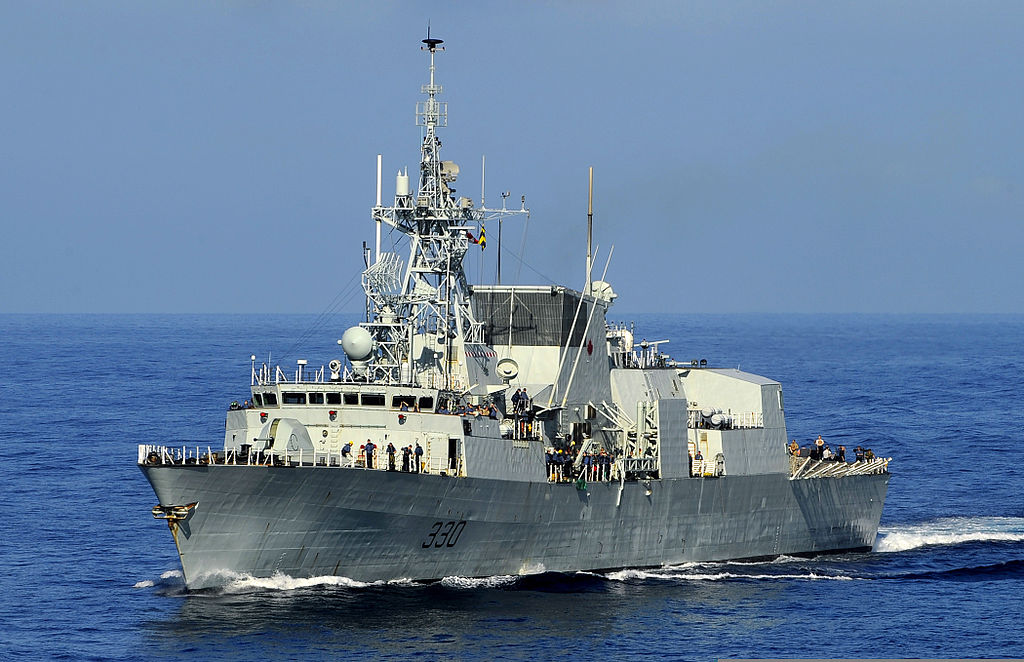
The United States Department of Defence completed its latest Quadrennial Defence Review (QDR) in March 2014, through which American defence officials and policymakers rigorously reviewed the country’s strategic guidance and defence spending. It is expected that, based on the results of this most recent review, the Pentagon will soon release an update to Cooperative Seapower for the 21st Century, which is perhaps the most significant aspect of the United States Navy’s strategic guidance. Furthermore, the QDR is supplemented by a Defence Strategic Guidance, the latest of which was released in 2012.
These reviews and doctrines serve to fine tune the US Navy, gauging how effectively the country’s forces can respond to maritime threats. Canada lacks an equivalent to the QDR, with any strategic review conducted on an ad hoc basis. After years without direction, the Department of National Defence (DND) released a weighty tome in 2001 entitled Leadmark: The Navy’s Strategy for 2020. As this was developed and published prior to the terrorist attacks of September 11 that year, an update came in 2005, entitled Securing Canada’s Ocean Frontiers: Charting the Course from Leadmark, which integrated lessons from Canada’s ongoing participation in Operation Active Endeavour. Since then, no further updates to Canada’s maritime strategy have been released.
Canada could greatly benefit from an equivalent process to the QDR. Although the National Shipbuilding Procurement Strategy (NSPS) was released in 2011, it is difficult to assess how effectively the Strategy is being pursued and whether it is meeting Canada’s defence needs. Recent announcements certainly suggest that the NSPS is not delivering, especially as the Protecteur-class supply vessels have been retired well before the expected delivery of their replacements and as the Canadian government backpedals on its previously planned procurement of new Arctic Offshore Patrol Ships. A QDR would add some sense of urgency to naval procurement, as defence officials would be expected to routinely report on their progress to Canadian parliamentarians.

Another objective of such a review should be to determine whether the Royal Canadian Navy is in strategic lockstep with its allies. If a significant gap in capabilities or priorities is found, an update on the scale of Leadmark 2.0 in 2005 could readily be prompted. Failing to maintain interoperability for Canada’s maritime forces could lead to Canada’s being sidelined in future operations, with the United States turning to other NATO member states or partners to provide support.
If, following the conclusion of the NATO Training Mission in Afghanistan, it is in fact the intent of Canadian policymakers to pursue a more subdued role for Canada in international security affairs, a strategic review is all the more necessary. Leadmark and Charting the Course both assume a continued role for Canadian vessels in multilateral operations, often either interdicting traffickers and pirates or supporting American vessels in combat. An entirely new strategic doctrine would need to be adopted to help foster the transition of the Royal Canadian Navy to a role that instead focuses on exerting sovereignty in the Arctic and defending Canadian territorial waters. This would also require revisiting the NSPS, especially as it pertains to the procurement of combat vessels, and so this casts doubt on the possibility that this is the scenario currently envisioned by Canadian policymakers for the military.
Yet calls for an update to Canadian strategic guidance have been limited. In analyzing Canadian public opinion, the original Leadmark laments, “some Canadians are unaware of their navy, and do not understand where ‘naval’ fits into a ‘national’ strategy.” 13 years later, one may wonder whether parliamentarians have also forgotten their navy, hoping that haphazard and half-hearted fleet replacement will be a sufficient remedy to Canada’s declining maritime power.




